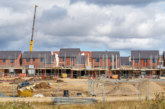 Matthew Warburton, Policy Advisor at the Association of Retained Council Housing (ARCH), says additional grant funding, as well as an extension of the rent policy, would give local authorities greater confidence planning for the future and provide a more conducive environment in which to deliver government’s commitment to build a new generation of council housing.
Matthew Warburton, Policy Advisor at the Association of Retained Council Housing (ARCH), says additional grant funding, as well as an extension of the rent policy, would give local authorities greater confidence planning for the future and provide a more conducive environment in which to deliver government’s commitment to build a new generation of council housing.
In her introduction to the Social Housing Green Paper, the Prime Minister declared the Government’s commitment to build ‘a new generation of council homes to help fix our broken housing market’, and ‘get back to the scale of social housing that will deliver a real difference to communities’. Important steps have been taken to make this possible: abolition of HRA debt caps and the proposed levy on ‘higher value’ council assets, together with a return to above-inflation rent increases for five years from 2020. But they are not enough.
The Budget report estimated that these measures would enable an increase in council housebuilding to around 10,000 homes a year by 2022. ARCH has not seen the calculation on which this number is based but it is broadly in line with our own estimates. Far from providing for a ‘new generation’ of council housing, it is insufficient to replace the 12-13,000 homes sold annually since reinvigoration of the Right to Buy and barely enough to match the ‘additional’ sales to which the one-for-one replacement policy strictly applies.
How many new homes would be needed to ‘get back to the scale of social housing that will deliver a real difference to communities’? ARCH estimates that 30,000 homes a year for social rent is the minimum necessary for council housing to play a sustainable ‘safety net’ role, by which we mean one-for-one replacement of homes sold through Right to Buy, plus enough additional stock to reduce the time spent by homeless households in temporary accommodation to a humane period.
That would make a big difference to those most in need, but not, in most areas, be enough to make a ‘real difference’ to local housing markets, enough to be felt by local communities. For that, we estimate 50,000 homes a year is the minimum to aim for, recognising that it will take time for councils to build up capacity and expertise to deliver this level of output.
Making council housebuilding a reality
What is needed to make this possible? Councils are now free to borrow to build up to the maximum they can safely afford to repay. What they can safely afford to repay depends on two main factors — their predicted rent income, and, equally importantly, the degree of uncertainty and risk associated with this prediction.
The Government has removed important areas of uncertainty by deciding not to implement the levy on higher value assets and providing certainty on rents up to 2025. But Six years is a fraction of the 30 years over which new home construction is financed, and a prudent local authority is bound to hold back resources against the possibility of future policy changes. Extending the rent policy to cover a minimum of 10 years from 2020 would significantly improve the confidence with which councils can plan for the future.
The alternative to additional rental income to support investment in new council homes is additional grant. ARCH welcomed the Government’s decision in 2017 to make an additional £2bn available to support the provision of homes for social rent. But this will only deliver 25,000 more homes across the local authority and housing association sectors. We are looking to the forthcoming Spending Review to substantially increase the provision for social rented homes.









